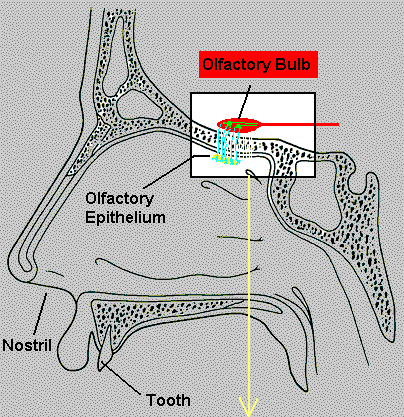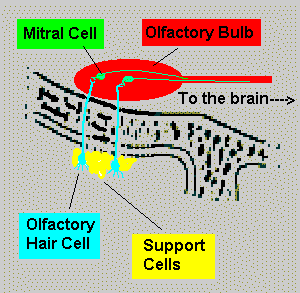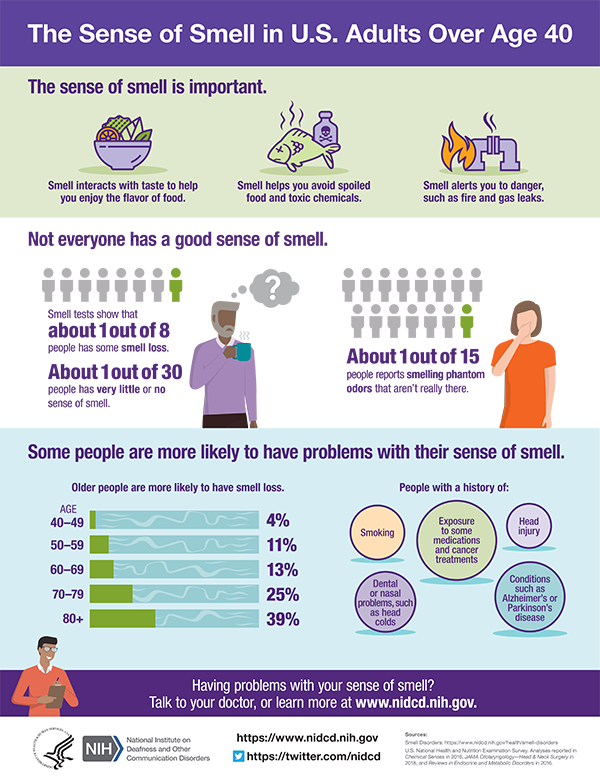Neuroscience For Kids
Smell - The Nose Knows
 The smells of a rose, perfume, freshly baked bread and cookies...these
smells are all made possible because of your nose and brain. The sense of
smell, called olfaction, involves the detection and perception of
chemicals floating in the air. Chemical molecules enter the nose and
dissolve in mucous within a membrane called the olfactory epithelium. In
humans, the olfactory epithelium is located about 7 cm up and into the
nose from the nostrils.
The smells of a rose, perfume, freshly baked bread and cookies...these
smells are all made possible because of your nose and brain. The sense of
smell, called olfaction, involves the detection and perception of
chemicals floating in the air. Chemical molecules enter the nose and
dissolve in mucous within a membrane called the olfactory epithelium. In
humans, the olfactory epithelium is located about 7 cm up and into the
nose from the nostrils.
The Olfactory System


Hair cells are the receptors in the olfactory epithelium that respond to particular chemicals. These cells have small hairs called cilia on one side and an axon on the other side. In humans, there are about 40 million olfactory receptors; in the German Shepherd dog, there are about 2 billion olfactory receptors.
 No one knows what actually causes olfactory receptors to react - it
could be a chemical molecule's shape or size or electrical charge. The
electrical activity produced in these hair cells is transmitted to the
olfactory bulb. The information is then passed on to mitral cells in the
olfactory bulb.
No one knows what actually causes olfactory receptors to react - it
could be a chemical molecule's shape or size or electrical charge. The
electrical activity produced in these hair cells is transmitted to the
olfactory bulb. The information is then passed on to mitral cells in the
olfactory bulb.
The olfactory tract transmits the signals to the brain to areas such as the olfactory cortex, hippocampus, amygdala, and hypothalamus. Many of these brain areas are part of the limbic system. The limbic system is involved with emotional behavior and memory. That's why when you smell something, it often brings back memories associated with the object.
As you probably know, when you have a cold and your nose is stuffed up, you cannot smell very well. This is because the molecules that carry smell cannot reach the olfactory receptors.
Did you know? |
|
Try It! |
|
For more information about the sense of smell, see:
- Following Our Noses - from Time Magazine, March 23, 1998 - Other animals can communicate volumes through smell. Now it appears we can too.
- Seeing, Hearing and Smelling the World
- ChemoReception Web - Taste and Smell
- Chemoreception - Monell Chemical Senses Center
Hearing | Smell | Taste | Touch | Vision | Working Together
Copyright © 1996-2011, Eric H. Chudler All Rights Reserved.

